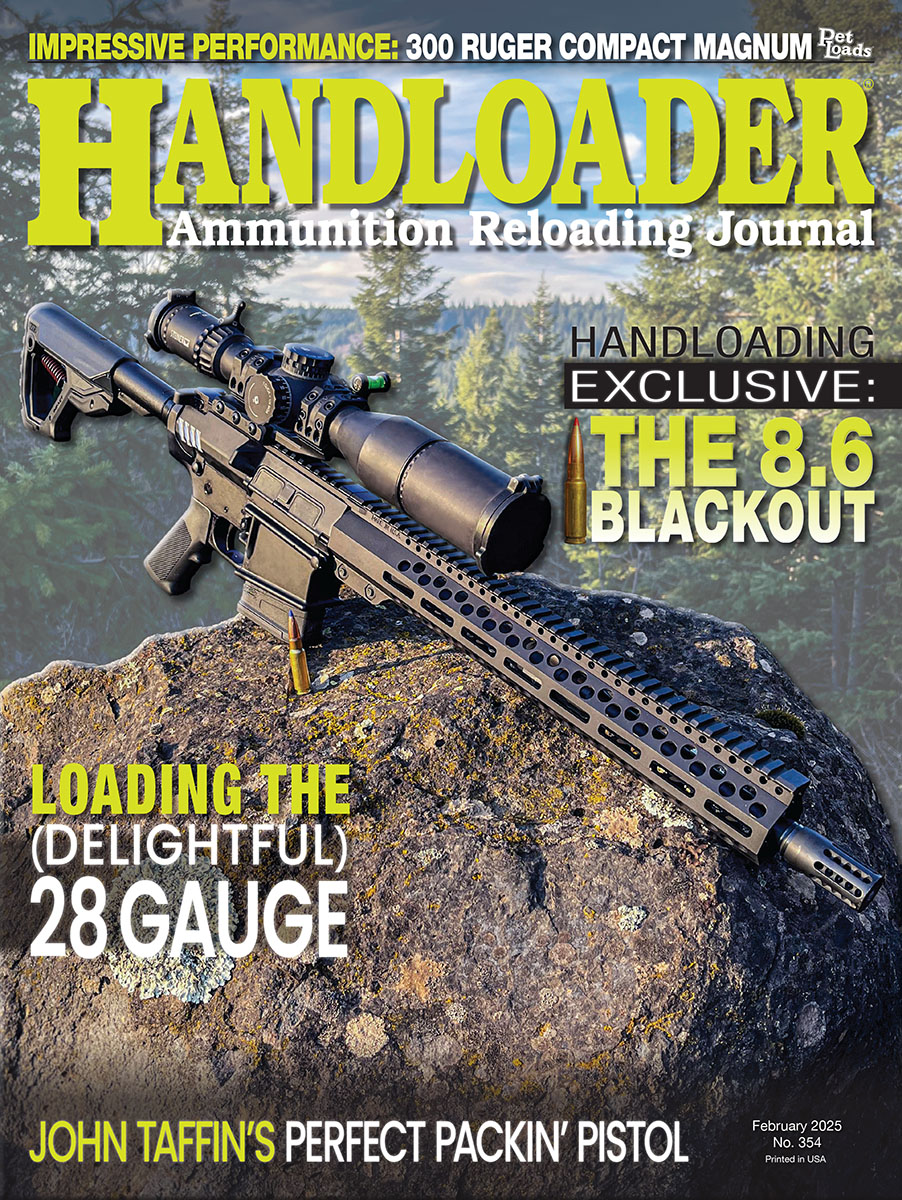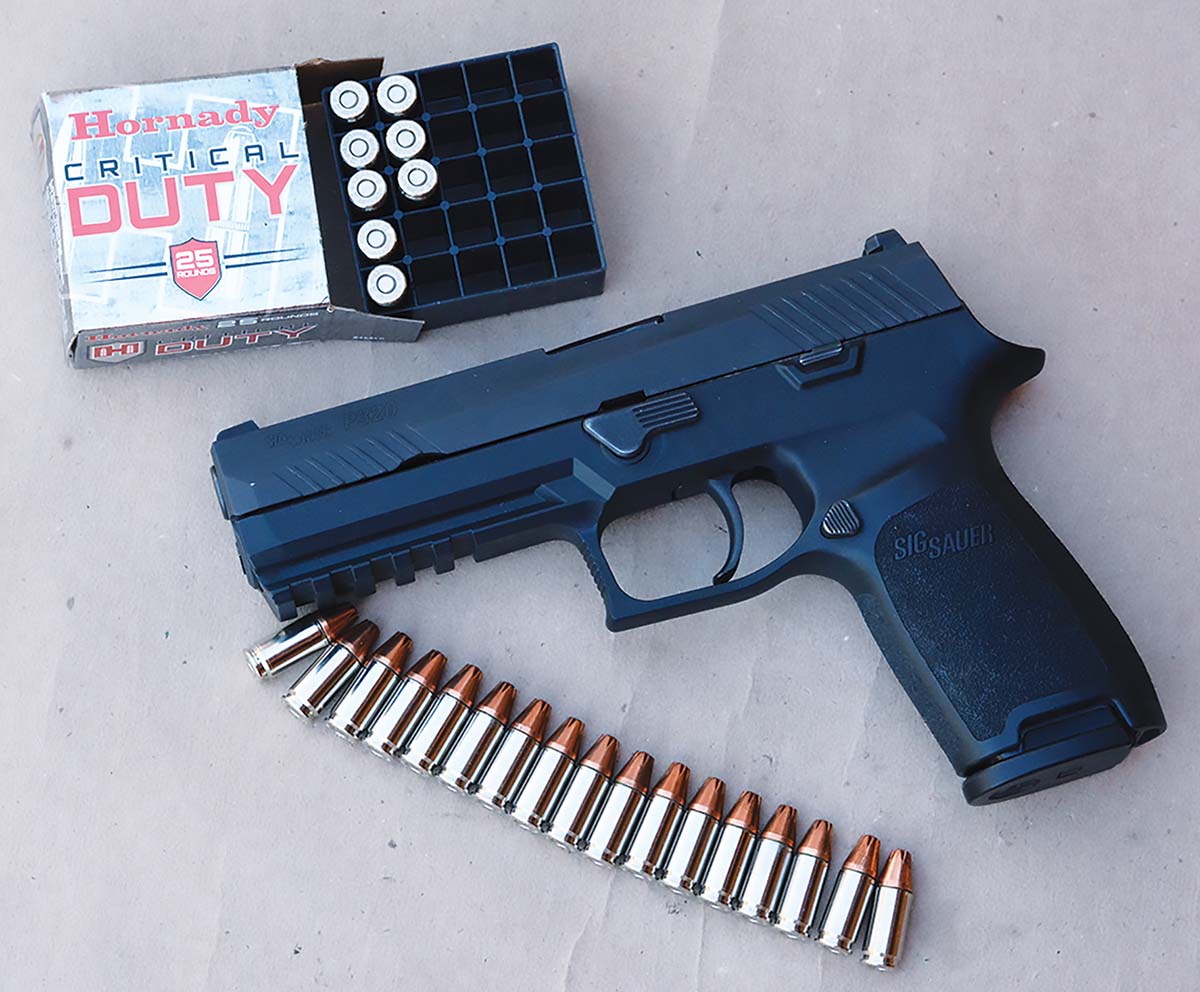
The SIG Sauer P320’s standard magazine capacity is 17 rounds.
The SIG Sauer P320 was first offered to the U.S. market in 2014 and then formally adopted by the U.S. Military as their standard sidearm in 2017 as the M17 (full size) and M18 (compact), replacing the Beretta M9 (92 series for the civilian market), which was the Military’s sidearm since 1985. The previous pistol was the Colt Model 1911 45 ACP that was adopted in that same year and served admirably through many, many wars and conflicts for an incredible 74 years – and still does in the hands of elite fighting men in various Special Forces that further proves its timeless design and caliber. However, the U.S. wanted to become NATO-compliant and changed from 45 to 9mm in 1985. Any U.S. Military adopted handgun is interesting, which brings us back to the controversial SIG Sauer P320 that is the Military’s first striker-fired pistol.
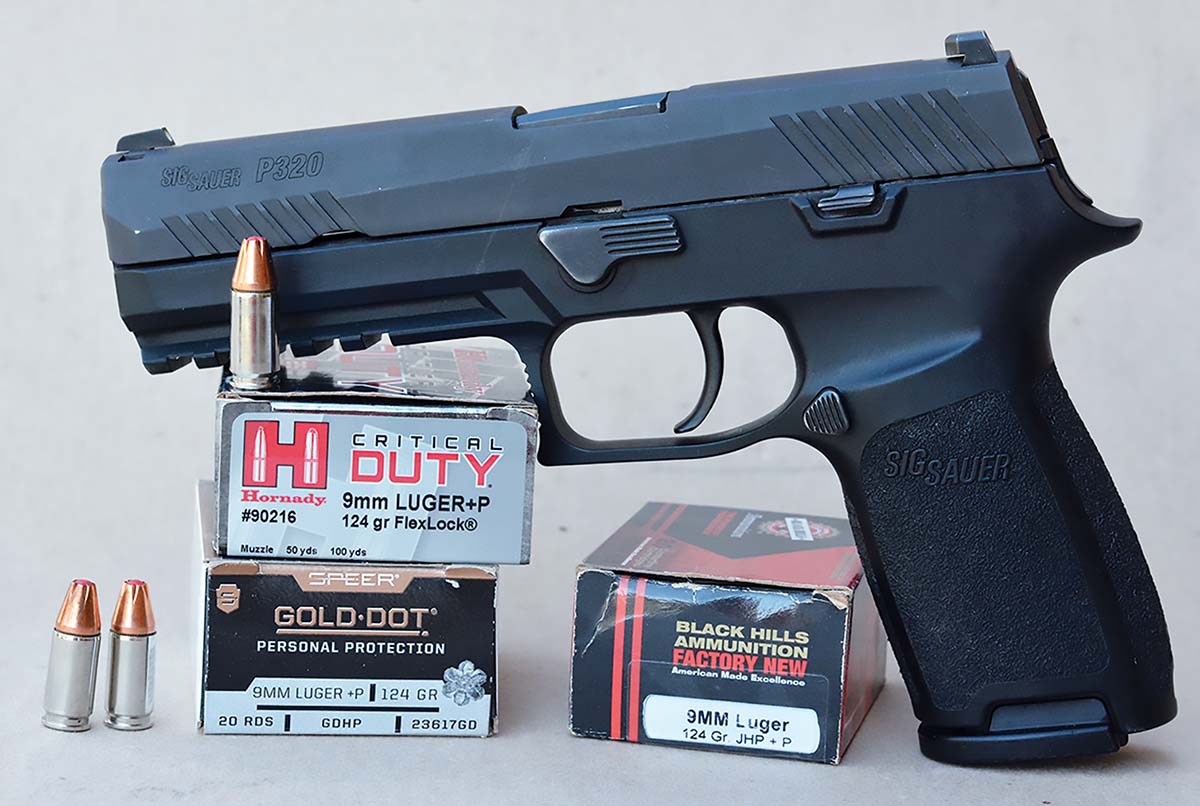
The SIG Sauer P320 was tried with premium 9mm factory loads from Black Hills, Hornady and Speer.
Before proceeding, a little background information seems necessary to better understand the P320. In 2015, the military put out their requirements for a new modular pistol in the XM17 competition that allowed potential manufacturers to submit guns to be judged if they met the basic criteria. Initially, 12 guns were submitted, but after phase one testing, only the Glock and SIG Sauer submissions remained. Phase two destruction testing was supposed to be 25,000 rounds fired, with further destruction tests as high as 35,000 rounds to better determine reliability. However, these tests were halted at just 12,500 rounds. Significantly short of the specified numbers, at which point the Sig Sauer was selected. Glock formally protested, but that protest was simply denied. Furthermore, according to Susan Poling in the GAO report, the Glock was going to cost a 37 percent premium. In spite of “evaluation errors” by the Military/Army, they could not justify paying more for the Glock. In summary, the SIG Sauer’s price was so attractive that testing was halted and never resumed. Initially, the U.S. Military planned to purchase 421,000 SIG pistols: 195,000 for the Army, 130,000 for the Air Force, 61,000 for the Navy and 35,000 for the Marines. Sources indicate those numbers have been increased since 2017.
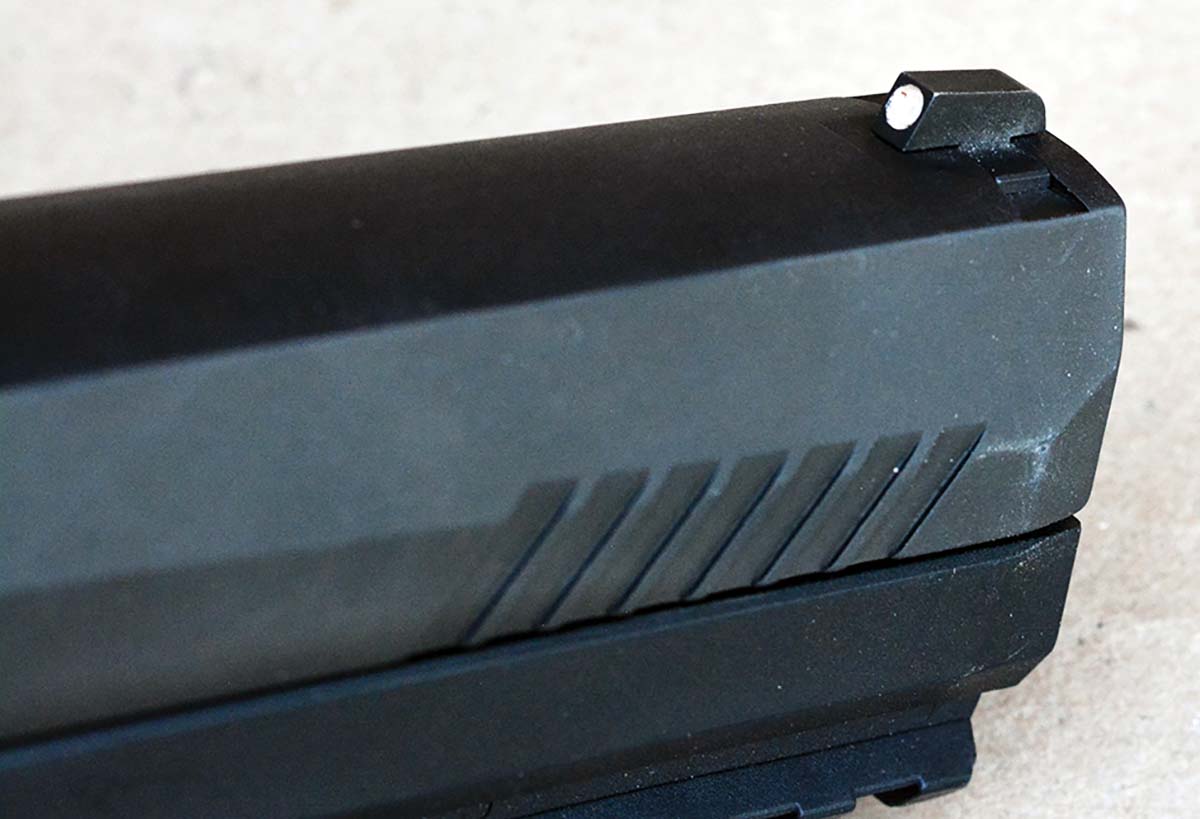
The front sight features a white dot and is dovetail mounted into the slide.
That is only the beginning of this long and complex story. In Product Verification Testing in the Fiscal Year 17, it was discovered that the XM17 could discharge when dropped (and has discharged many times in independent testing). SIG Sauer made changes to the trigger group mechanism, including using lighter-weight components in Military pistols. Civilian and law enforcement guns continued to ship with the older trigger design, which was a very poor decision. As safety issues arose, SIG Sauer began offering “Engineering Change Proposal” (ECP) to civilian and police guns as a “Voluntary Upgrade Program” (VUP) at no charge. The problem, however, still existed and was much worse than originally thought. It also revealed issues with the gun having double ejection, wherein live rounds are kicked out on the ground, and there were stoppages with standard 9mm NATO ball loads.
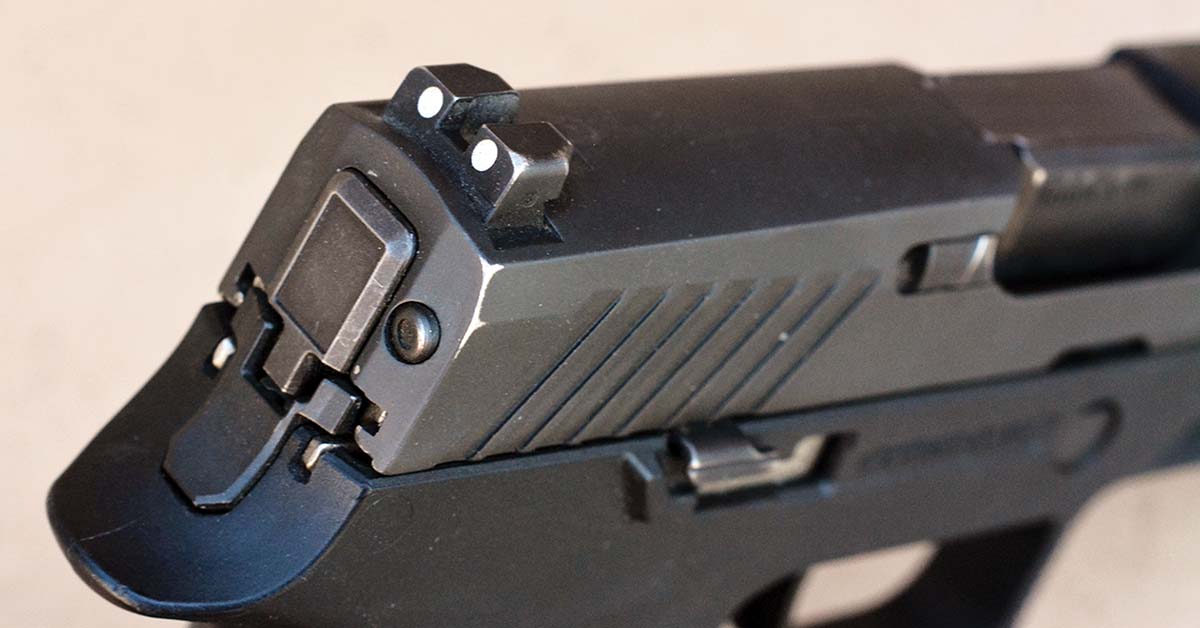
The rear sight features two white dots and is dovetailed into the slide.
Here is where it gets really interesting. After the U.S. Army adopted the M17, many police and law enforcement agencies quickly adopted the P320, and civilian sales surged. This seemed logical as the U.S Army had supposedly torture tested it, wherein it beat out 11 other top-drawer pistols for safety, reliability, durability for use in harsh combat conditions, etc. It should be a great gun, but the facts prove otherwise.
Police and civilians began experiencing “uncommanded discharges” wherein the pistols would fire while holstered without even being touched. While a small percentage of these events had keys or some other foreign objects get caught inside the holster that essentially “pulled” the trigger causing it to fire. The vast majority were strictly a failure of the pistols mechanical design exasperated by excess tolerances. Injuries have been severe and many of these events were even caught on video cameras clearly showing that it was not shooter error.
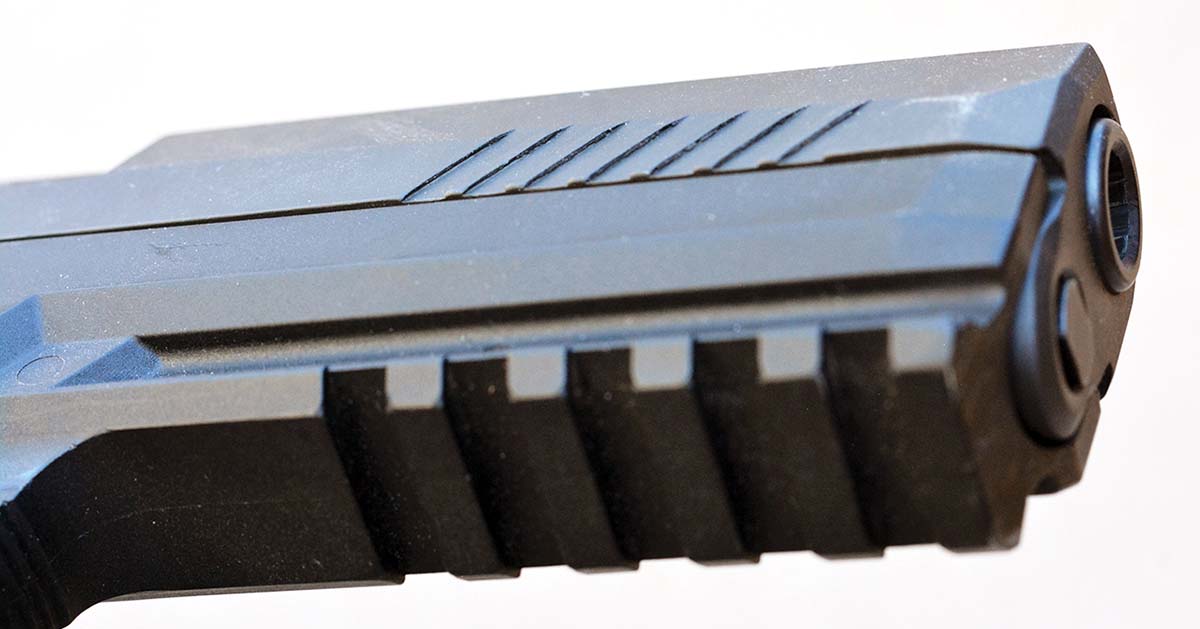
A Picatinny rail accommodates a variety of accessories.
Several years ago, I was an expert witness in a case where in a P320 fired without the trigger being touched that caused severe, life changing injuries to the owner. That pistol even had the VUP trigger installed. A huge number of lawsuits have been mounting for years and are continuing to grow at an alarming rate.
Many police departments have abandoned the P320 due to safety concerns and many trainers, training facilities, shooting ranges and other organizations have completely banned their use.
In July 2025 the FBI Ballistic Research Facility (BRF) released a 32-page report that raises serious concerns over the safety of the SIG Sauer M17/M18 pistols. The BRF presented several weaknesses in the design that can potentially cause pistols to fire without a pull of the trigger. These include wear to the sear notches, the striker pin hook and the striker safety lock spring that can come loose during recoil and if unseated can cause the pistol to become unsafe.
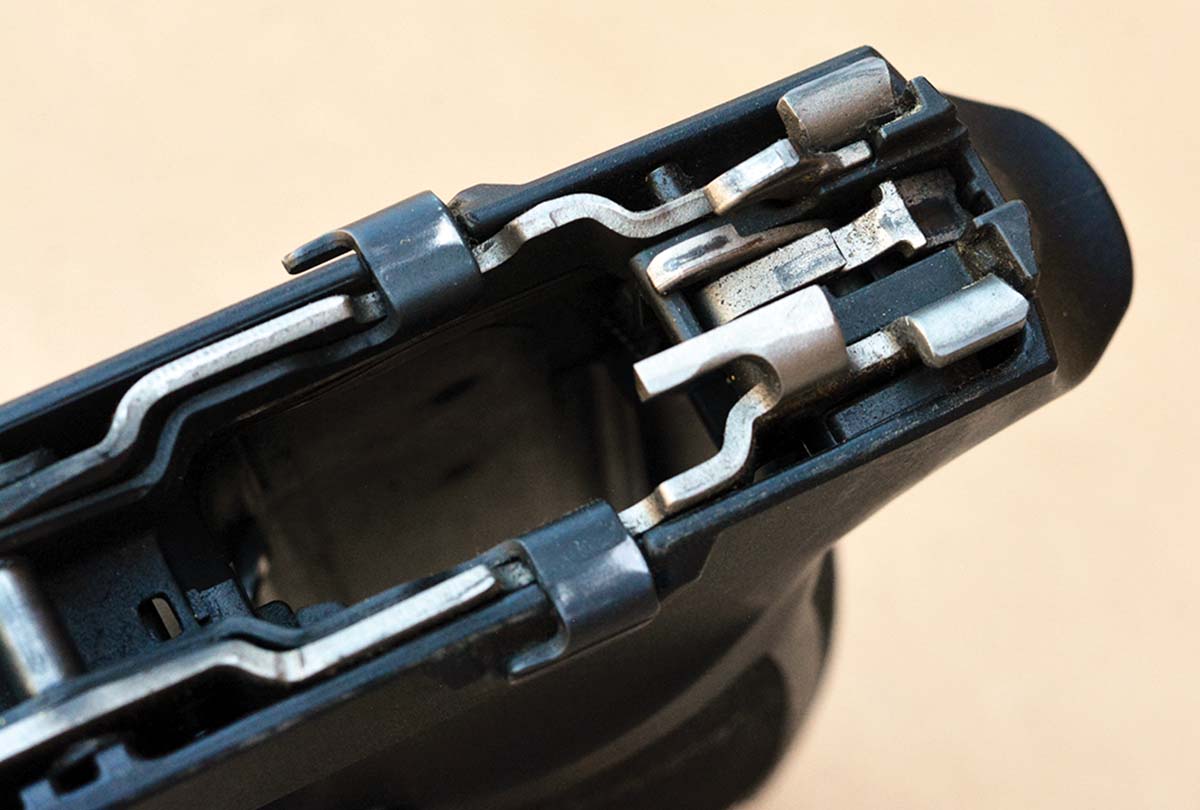
The mechanical design of the SIG Sauer P320 differs significantly from most other striker fired pistols in that when at rest.
In July 2025, a 21-year-old U.S. Air Force airman was killed in Wyoming and that directly resulted in the suspended use of M18 pistols by the Global Strike Command. However, it should be noted that the Air Force knew the pistol had a problem for years. In 2022 a staff sergeant loaded a magazine and released the slide only to have the gun fire. An extensive investigation followed, concluding that the sergeant had not pulled the trigger; rather the pistols disconnect had failed. Officially the Air Force determined “the weapon suffered a mechanical failure.” But this was not isolated, as the squadron commander continued in his report that “negligent discharges are on the rise” and other “reported possible mechanical malfunctions” of the M18. In fact, there have been 32 separate discharges of the M18 on Air Force bases since 2020.
In July 2025 the U.S. Immigration and Customs Enforcement (ICE) issued a memorandum stating that all models of SIG Sauer P320 are no longer approved and should be replaced with Glock 19 MOS pistols. I could continue with much more information, including the pistol’s status with the U.S. Marines, but it is clear that the SIG P320 has a serious problem. Regardless, as of the date this is written, the U.S. Army has no known plans to discontinue use of the M17/M18.
The P320 design is rather unique (and departs from other striker fired pistols) in that it is basically at full cock when at rest. The striker is under continual spring pressure or pre-tension and drops when the trigger is pulled. In military form, the striker safety lock becomes ineffective if the sear fails and will allow the striker to hit the primer of a live round. To further contribute to the problem, the slide and frame relationship of many P320’s is a very loose fit, with excessive play, especially in up and down movement. It appears this combination can contribute to failed drop tests, uncommanded firing, etc.
In spite of overwhelming evidence to the contrary, SIG Sauer adamantly defended the P320 for years indicating that it absolutely cannot fire uncommanded. Their responses have been the perfect textbook example of how to not handle a huge crisis. However, as these words are written months prior to press, SIG has begun to soften their position. Regardless, it will be interesting to see how this U.S. Military pistol and SIG survive this crisis.
It is my opinion that SIG was awarded the MHS contract prematurely and that the details surrounding the Army’s failure to follow testing protocol and adoption should be fully investigated and published.
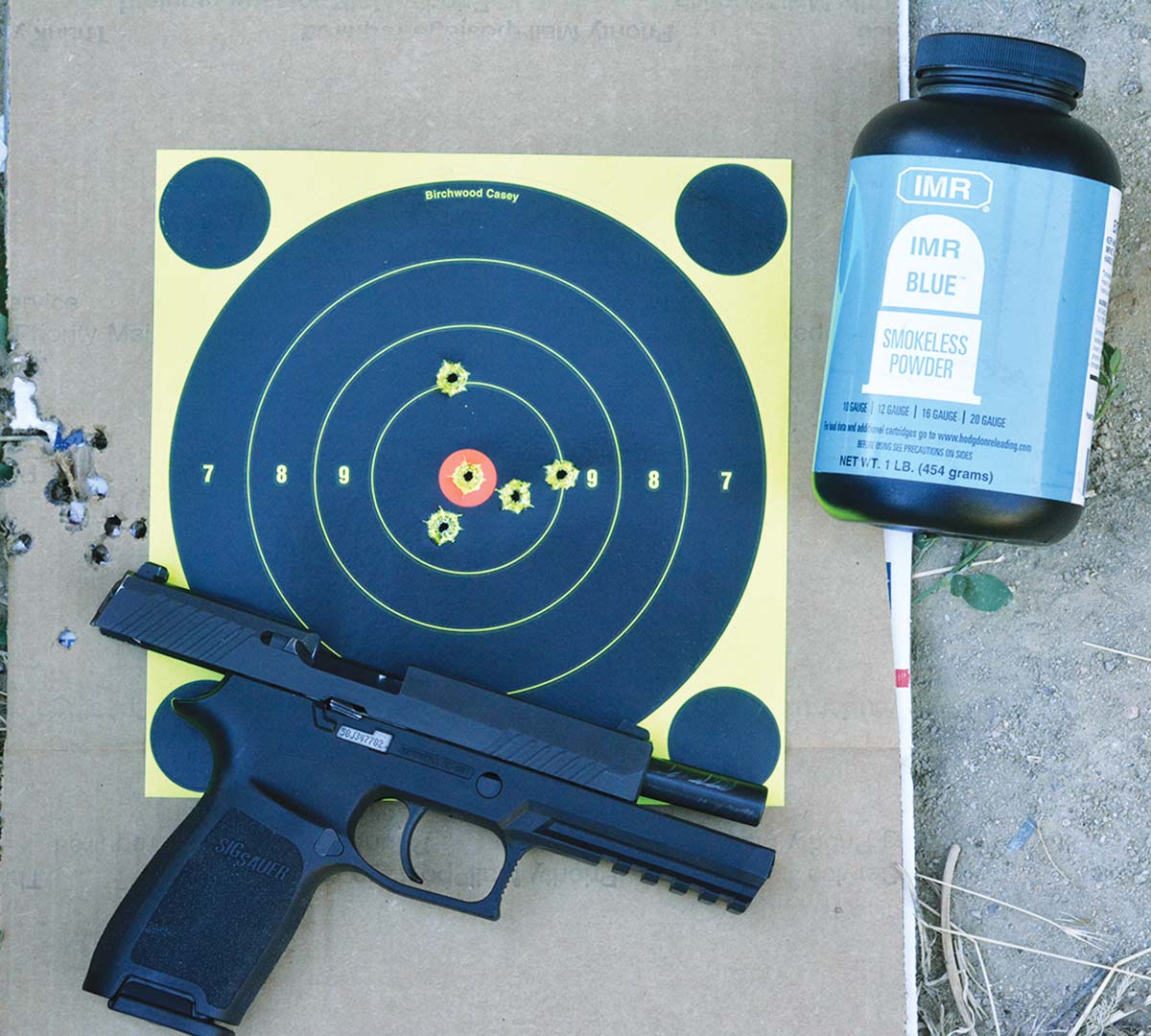
The SIG Sauer P320 proved accurate with 20-yard groups typically hovering around 2½ inches.
On the civilian market, the SIG Sauer P320 has been very successful with more than 3 million pistols sold in just one decade. It is available in several configurations and offered in 9mm, 357 SIG, 40 S&W, 10mm Auto and 45 ACP. For today’s purposes, a 9mm (the most popular) was selected that features 17-round capacity, a Picatinny rail, a 4.7-inch barrel and black Nitron coated finish. Without a magazine it tips the scales at 25.4 ounces, but with the steel magazine installed it runs 28.6 ounces empty.
Although I have detailed experience with the P320, I tried to give it a fresh unbiased look, as if I had never seen, handled or shot one previously. Several things stood out. It is rather large, which makes the compact versions much more interesting. The second item is that the axis of the bore is fairly high, resulting in more muzzle rise and a slower recovery time when compared to most competing pistols. On the other hand, the little 9mm doesn’t produce heavy recoil, so that design feature is not a significant problem.
On the positive side, the grip is rounded, comfortable and angled properly for natural pointing. The trigger pull is a bit mushy, but virtually all striker fired pistols are, and this one is better than most. The trigger reset is fairly good and not excessively long. The magazine release is easy to reach and operate without repositioning the hand. Likewise, the slide release is easy to reach without hand repositioning when dropping the slide. The 3-dot sights are dovetail mounted, compact, yet robust and combat worthy. The takedown (or disassembly) for quick field cleaning is simple and takes just a couple of seconds.
Using three factory loads from Black Hills, Hornady and Federal, all with 124-grain expanding bullets, the P320 was one of the more accurate striker fired pistols that I have worked with. As can be seen in Table II, groups at 20-yards consistently measured between 2.40 to 2.80 inches.
Moving on to handloads containing 115, 124 and 147-grain JHP bullets from Hornady, Speer and Nosler respectively, groups ran 2.50 to 2.70 inches (see Table 1 for details).
Throughout testing, the gun worked flawlessly with no failures or stoppages. In case you are wondering, yes, I dropped tested it many times, as well as other tests trying to get the gun to fire uncommanded. It passed. With that said, I do not recommend carrying any SIG P320 in this condition – with a round in the chamber, never! In fact, the SIG owner’s manual currently is not recommending it either.
As indicated, SIG is not accepting any responsibility for guns firing in holsters or otherwise uncommanded. However, it seems inevitable that they will eventually be forced (by military requests or the sheer number of lawsuits) to develop a new system to replace the defective trigger/firing system. Also, it is noteworthy that a former SIG engineer has filed a patent for a P320 safety fix and later assigned that patent to Angled Spade Technologies. Perhaps there is a fix either from SIG or an independent company in the not-too-distant future.







.jpg)
.jpg)


